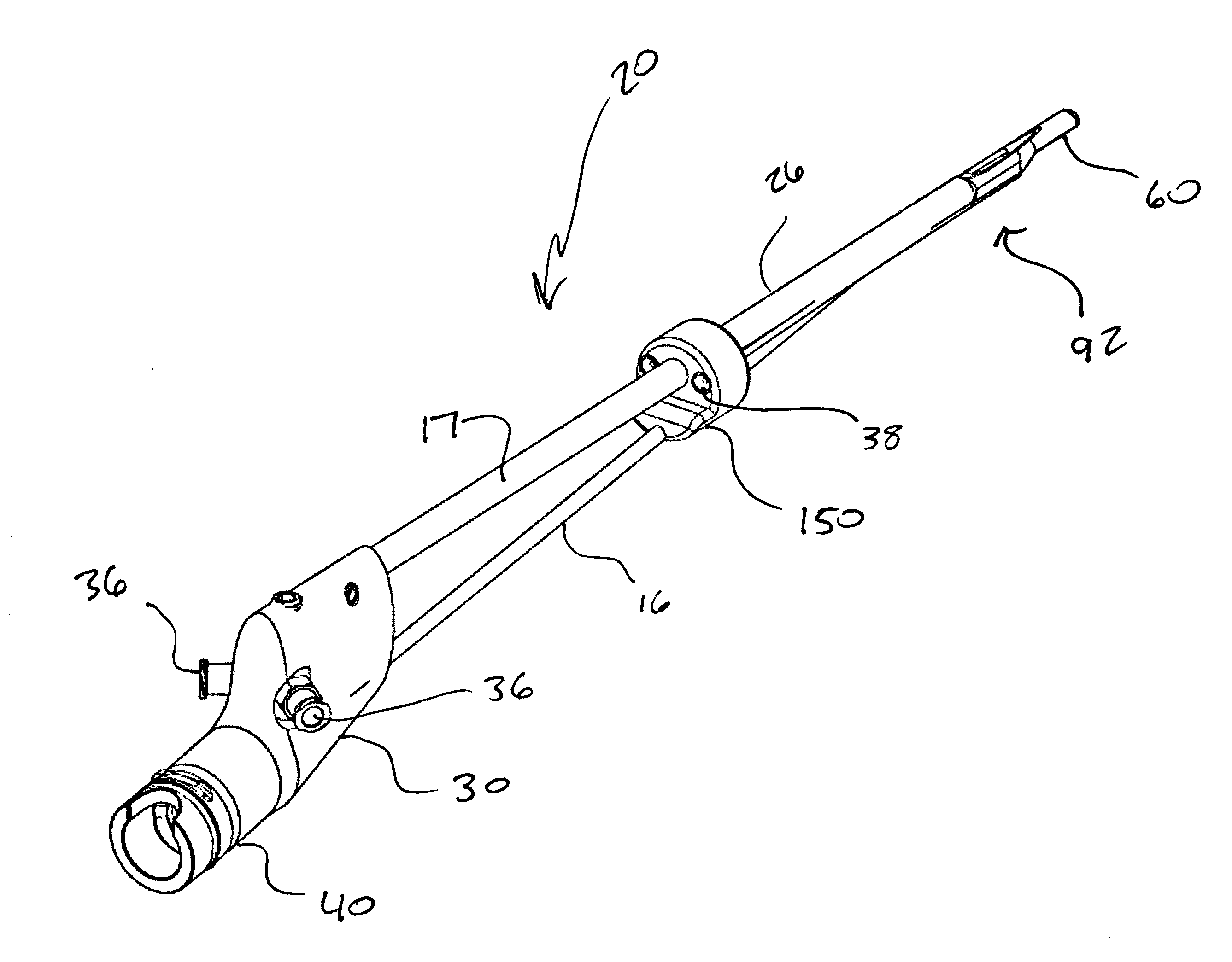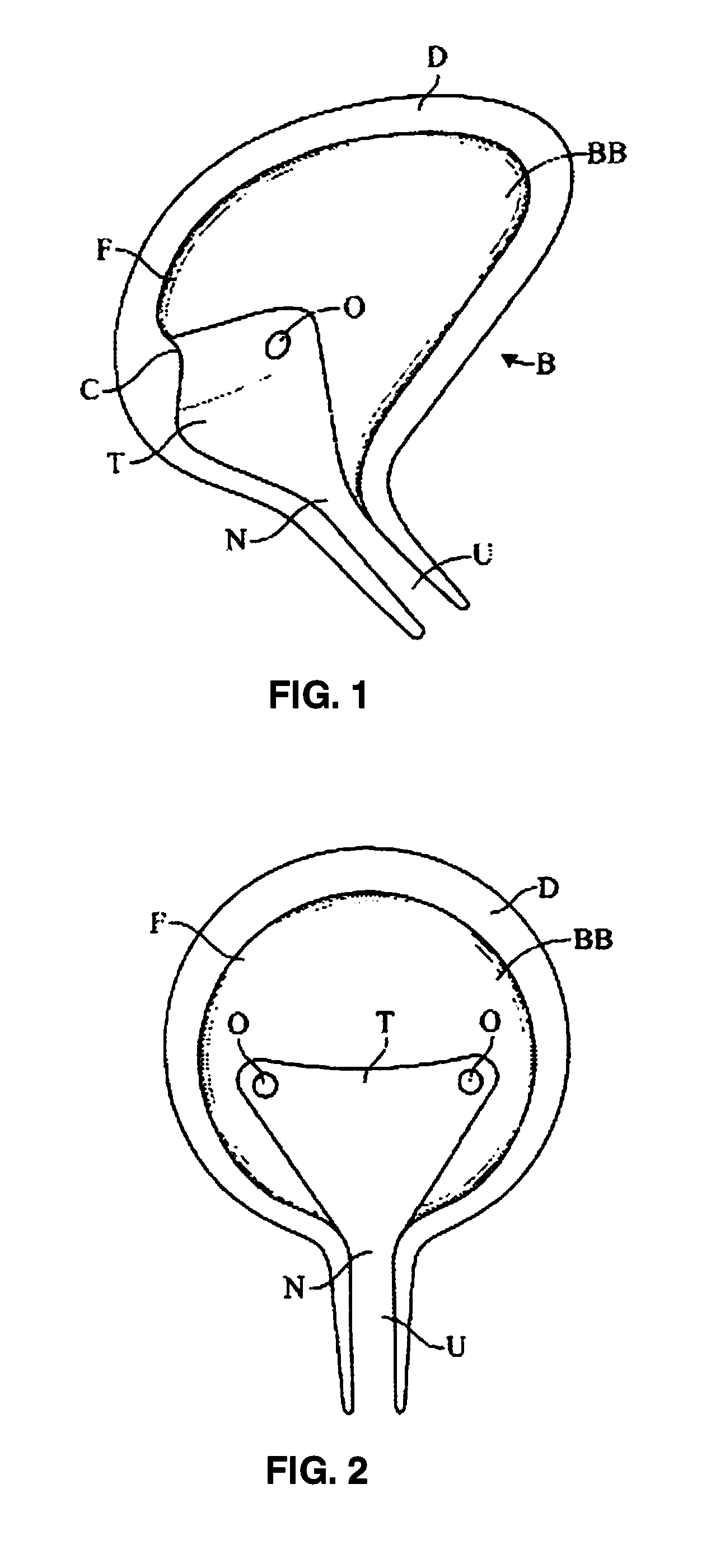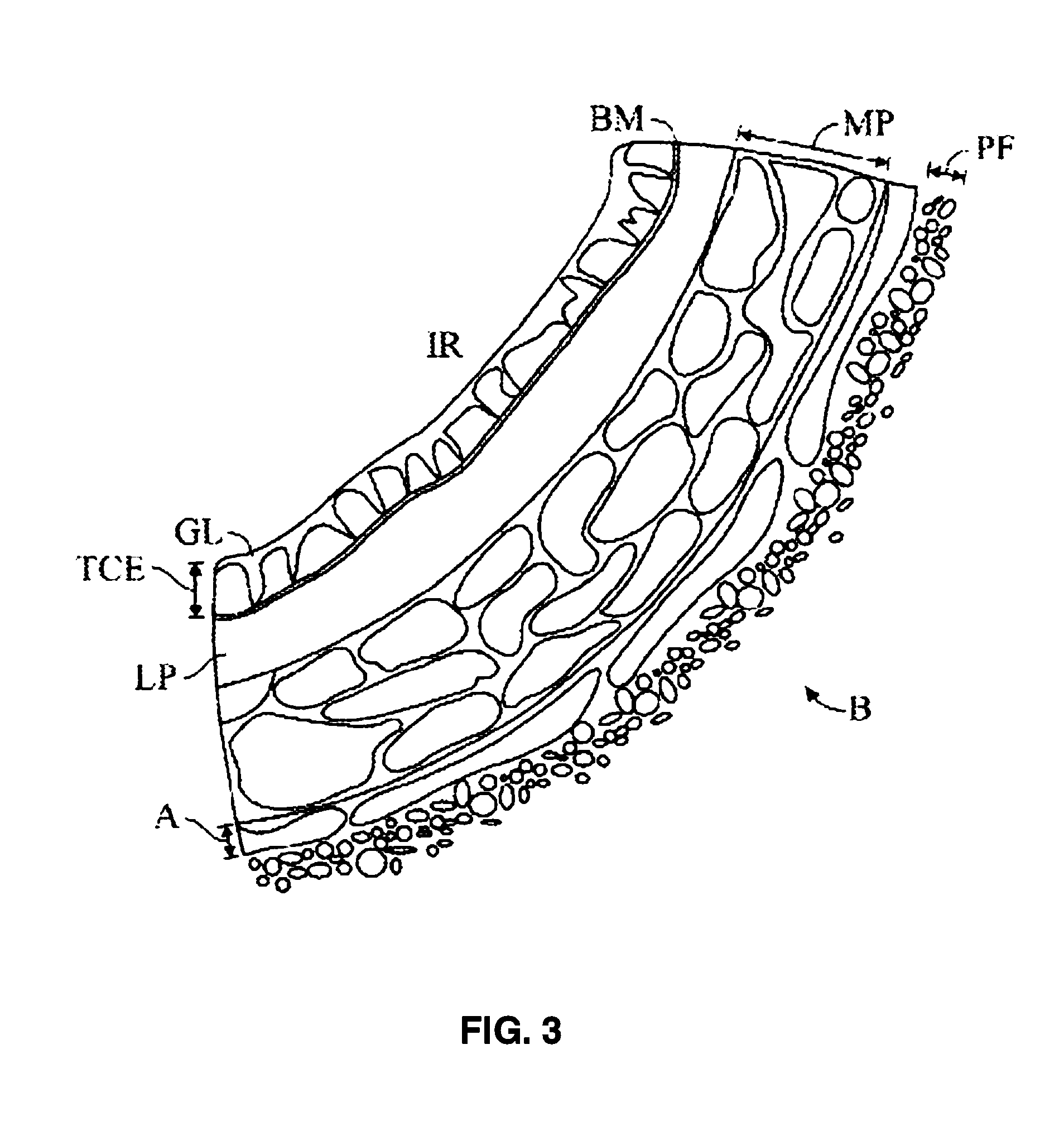Methods And Devices For Treating Pelvic Conditions
a technology for pelvis and conditions, applied in the field of pelvis conditions, can solve the problems of poor correlation, no commensurate remedy, and asymptomatic individuals may exhibit detrusor contractions, so as to prevent nerve regrowth, reduce the stretch of a selected region, and suppress the urgency
- Summary
- Abstract
- Description
- Claims
- Application Information
AI Technical Summary
Benefits of technology
Problems solved by technology
Method used
Image
Examples
Embodiment Construction
[0082]Specific embodiments of the invention will now be described with reference to the accompanying drawings. This invention may, however, be embodied in many different forms and should not be construed as limited to the embodiments set forth herein; rather, these embodiments are provided so that this disclosure will be thorough and complete, and will fully convey the scope of the invention to those skilled in the art. The terminology used in the detailed description of the embodiments illustrated in the accompanying drawings is not intended to be limiting of the invention. In the drawings, like numbers refer to like elements.
[0083]FIG. 4 illustrates an embodiment of a system 10 for treatment of body tissue, such as the bladder. Generally, the system includes a treatment device 20 and may include an endoscope 12. The treatment device 20 has a proximal end 22, a distal end 24, and an elongate shaft portion 26 between the proximal end 22 and the distal end 24.
[0084]The proximal end 2...
PUM
 Login to View More
Login to View More Abstract
Description
Claims
Application Information
 Login to View More
Login to View More - R&D
- Intellectual Property
- Life Sciences
- Materials
- Tech Scout
- Unparalleled Data Quality
- Higher Quality Content
- 60% Fewer Hallucinations
Browse by: Latest US Patents, China's latest patents, Technical Efficacy Thesaurus, Application Domain, Technology Topic, Popular Technical Reports.
© 2025 PatSnap. All rights reserved.Legal|Privacy policy|Modern Slavery Act Transparency Statement|Sitemap|About US| Contact US: help@patsnap.com



